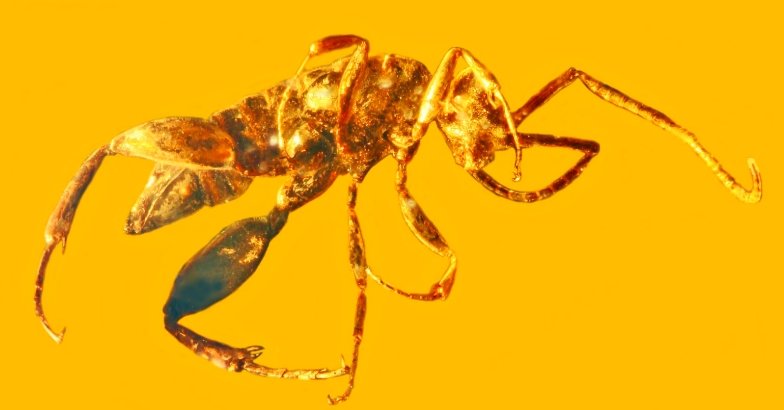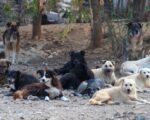A prehistoric wasp with a bizarre, flytrap-like abdomen has been unearthed in Myanmar, providing researchers with a rare glimpse into an ancient predator that once lurked in the Cretaceous forests. The extinct species, named Sirenobethylus charybdis, used its specialized grasping apparatus to trap prey before laying its eggs, a discovery that raises new questions about the evolution of parasitoid insects.
A Wasp Unlike Any Other
At first glance, Sirenobethylus charybdis might not seem too different from modern wasps. But a closer look reveals a terrifying feature—an abdomen equipped with three flaps and hair-like bristles, resembling the jaws of a Venus flytrap. This unique adaptation likely played a crucial role in its reproductive cycle, allowing it to capture hosts for its larvae.
The discovery, detailed in a study published in BMC Biology, was made possible through the analysis of 16 female specimens preserved in amber. The fossils, estimated to be 98.79 million years old, were found in Myanmar’s Kachin region and studied by a team of researchers from the Natural History Museum of Denmark and Capital Normal University in China.
One striking detail noted in the study is that no known modern insect possesses an abdomen quite like this. “I’ve seen a lot of strange insects, but this has to be one of the most peculiar-looking ones I’ve seen in a while,” said Lynn Kimsey, an entomologist at the University of California, Davis, who was not involved in the research.

How Sirenobethylus charybdis Hunted Its Prey
Unlike typical predatory wasps that actively hunt their prey, Sirenobethylus charybdis may have taken a more passive approach. Researchers believe the insect likely remained stationary, waiting for an unsuspecting host to wander into its grasp.
- The wasp’s flytrap-like structure was likely used to restrain prey, preventing escape.
- Once the prey was secured, the wasp would lay its eggs, allowing the larvae to develop inside the host.
- This behavior is characteristic of parasitoids—organisms that ultimately kill their hosts.
Its physical limitations also suggest that S. charybdis wasn’t built for long chases. Instead, it may have relied on ambush tactics, remaining hidden with its grasping mechanism wide open, much like a Venus flytrap waiting for its next meal.
The Ethical Dilemma Behind Myanmar Amber
The discovery of Sirenobethylus charybdis is scientifically significant, but it also highlights ongoing concerns regarding the amber trade in Myanmar. While amber fossils provide unparalleled insights into ancient ecosystems, their acquisition is fraught with ethical concerns.
| Issue | Details |
|---|---|
| Amber Trade Revenue | Estimated to generate $1 billion annually |
| Conflict Zone | Many amber mines are in Kachin, a region plagued by conflict |
| Military Involvement | Revenue has funded both government and rebel forces |
| Ethical Research Guidelines | Scientists are urged to study only pre-2017 amber |
In 2019, a United Nations Human Rights Council mission determined that Myanmar’s military was guilty of genocide and crimes against humanity. A year later, the Society of Vertebrate Paleontology urged researchers to avoid studying amber acquired after 2017, when the military took control of the mines.
This particular specimen, however, was donated to Capital Normal University by a private collector who purchased it in 2015, ensuring that its study adhered to ethical guidelines.
What This Discovery Means For Science
The finding of Sirenobethylus charybdis offers an important glimpse into prehistoric insect evolution. It suggests that highly specialized parasitic behavior existed far earlier than previously thought, and it may even prompt scientists to re-evaluate the evolutionary history of parasitoid wasps.
Despite its fascinating nature, the discovery is also a stark reminder of the controversies surrounding fossil excavation in Myanmar. While science benefits from these ancient specimens, the ethical implications of the amber trade remain a pressing issue for researchers worldwide.














